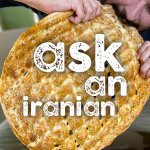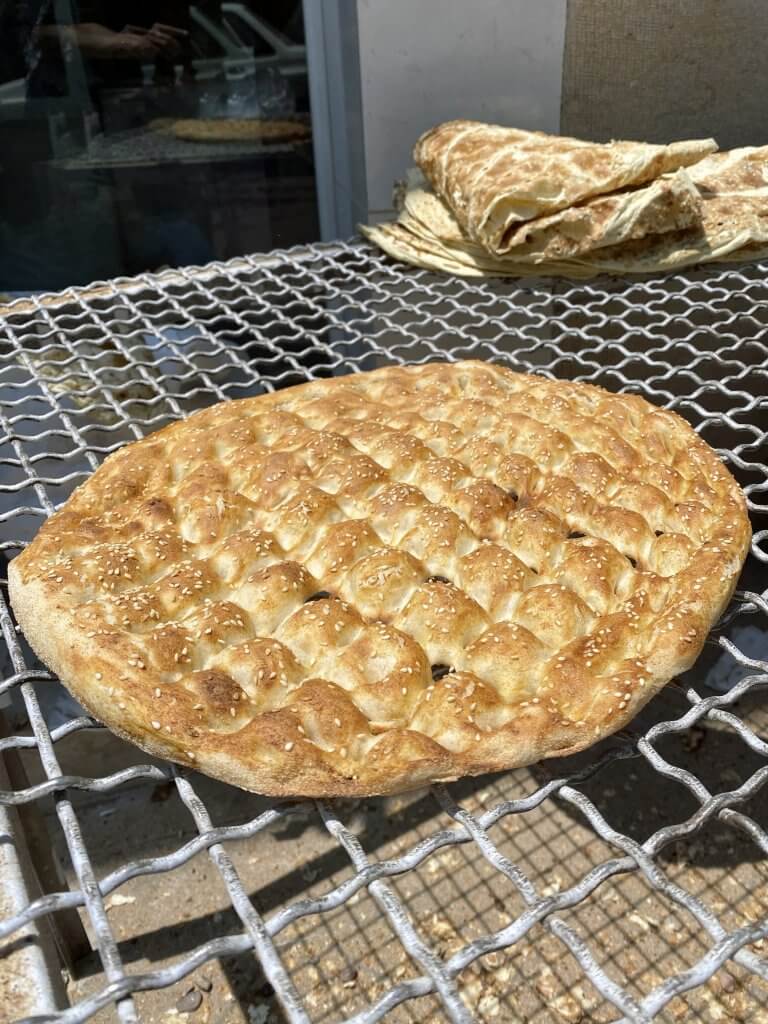
In this episode, we are joined by an Iranian chef, Shahriar of Shahriar’s Kitchen. He helps us answer a question from one of our listeners, Susie. She wants to know why it is that all Iranian bread is flat. Our guest, Shahriar, has worked as a chef around the world, and although he has a wealth of experience with Iranian and international cuisine, for his first appearance on Ask An Iranian we asked him to help get you familiar with one of Iran’s staples, Iranian flatbread.
Questions we also get answers to in this episode
- What is Iran’s national bread?
- Can you chip a tooth or burn your tongue when eating fresh ‘sangak’?
- What is the Iranian ‘sangak’ and bread and how it is made?
- How many seconds do you have to eat lavash before it’s inedible?
- What is the Iranian ‘barbari‘ bread and how is it made?
- Which queue should I stand in when at an Iranian bakery?
- What type of oven is used to bake Iranian bread?
- Do Iranians dip ‘barbari’ bread in their tea?
- Is it true that truck drivers put bread in their cola?
What makes Iranian flatbread flat?

This question is not so easily answered, and we maybe don’t address this question so directly in the show, so allow us to do so here. Flatbreads are unleavened, for the most part, and in most cases, don’t use a rising agent such as yeast. Flatbreads range from below one millimetre to a few centimetres thick so that they can be easily eaten without being sliced. They can be baked in an oven, fried in hot oil, grilled over hot coals or cooked on a hot pan. For a comprehensive list of flatbreads in the Middle East, please follow this link to Wikipedia.
How you can follow Shahriar
You can follow Shahriar on Instagram, by going to Shahriar’s Kitchen. At the time of recording the show, Shahriar’s infused olive oils and vinegars were available in Tehran’s, Beethoven Museum.
Break bread with friends and family

In this episode, we discuss how Iranians leave Iran with suitcases of freezer-bagged bread. Although this is mostly for personal consumption, Iranian bread is also taken as a souvenir, or “soghaati”, for Iranian friends and family. If you want to learn more about the Iranian culture of souvenir giving, you can listen to our show about “soghaati”.
Any questions, or any answers?
If you have any questions about Iranian bread, please leave a comment below, or if you are Iranian and think we’ve missed something, please also let us know in the comments section.
Translation of Persian (Farsi) words used in this show
| Persian | English translation |
|---|---|
| Sangak: | “Little pebble”, and also the name of the Iranian bread |
| Barbari: | A type of Iranian bread (arguably the world’s best) |
| Lavaash: | A very thin, Lego-looking, Iranian bread |
| Taaftoon: | Bread made with milk, yoghurt, eggs baked in a clay oven |
| Naan: | “Bread”, its Persian (Farsi) word |
| Tanoor: | An oven for baking bread |
| Safavid: | The name for an Iranian dynasty |
| Naan mahali: | “Local bread”, the term for locally made bread |
| Kashke baademjaan: | An Iranian dish made with aubergines (eggplant) |
| Chai chorak: | The name for bread and tea, consumed by the Torkeman |
Read more and find the links on ASKANIRANIAN.COM
Check the merchandise out on ASKANIRANIAN.COM/SHOP

Leave a Reply